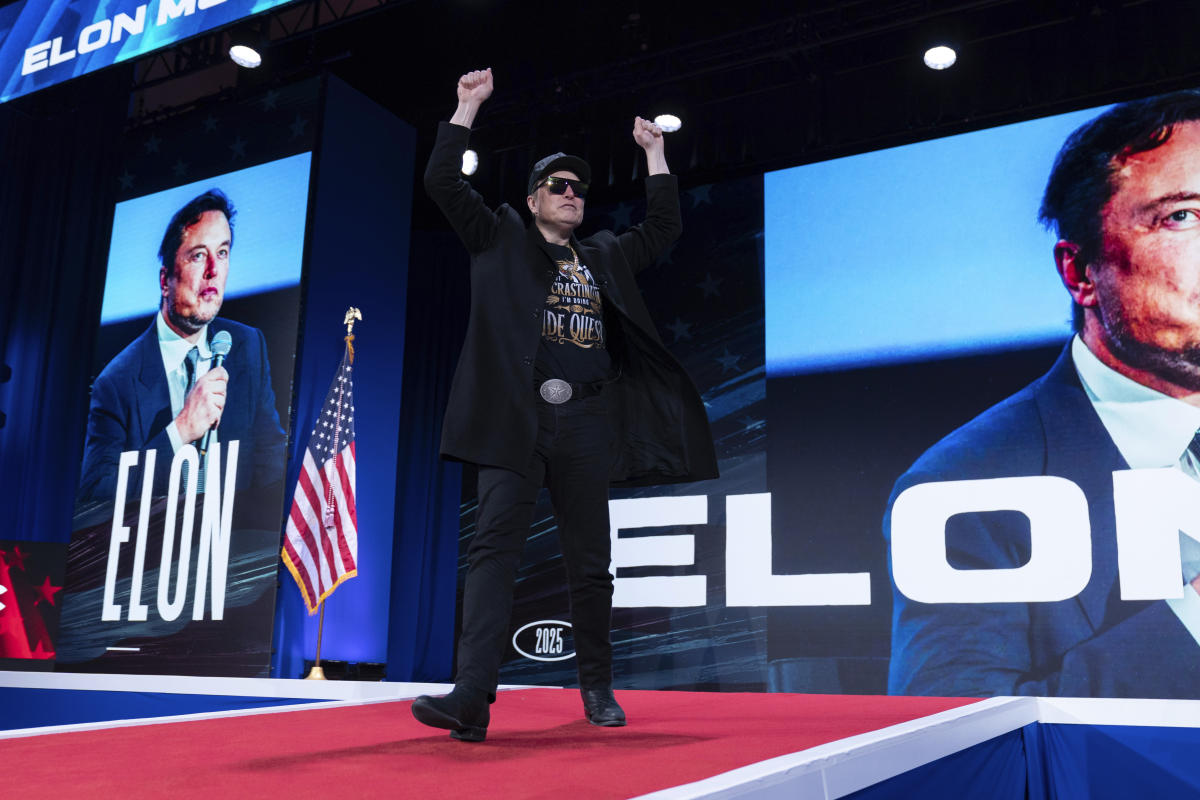
It’s been less than 60 years since Norman was considered a sundown town.
From around 1889 until 1967, Norman intentionally excluded African Americans from its community. African Americans were not allowed to be in the city after dark, could not be served meals in a restaurant, could not be homeowners, and more, according to an article by Michael S. Givel in The Chronicles of Oklahoma, a scholarly journal published by the Oklahoma Historical Society.
But in 1967, that changed when Norman had its first African American homeowners.
Advertisement
Advertisement
And just five years later, Booker D. Shackelford became Norman Police Department’s first African American officer.
He attended the 10th Norman Police Academy, graduating on April 27, 1973, along with eight other officers.
“He helped pave the way (for those who followed him),” said NPD Deputy Chief Ricky Jackson. “ I feel that because it was a positive experience and the interactions that Booker had with his co-workers and the community… He helped people realize that perhaps we are able to do these kinds of jobs. Because back then, there was a belief that we lacked the moral character to be good police officers.”
At the time, Police Chief Bill Henslee said Shackelford’s graduation marked another first for the department, which had recently added a requirement of at least 30 hours of college credit and was the first to have three female patrolmen on the force, according to an April 29, 1973 edition of The Norman Transcript.
Advertisement
Advertisement
“Now Norman is proud to have its first black officer, Booker Shackelford,” Henslee said.
In the six years that Shackelford worked with NPD, he became a Master Police Officer and worked with the SWAT team. In 1979, he left NPD to take a job in security at General Motors in Oklahoma City, where he worked for 23 years, according to his wife Sherryl Shackelford. He later returned to law enforcement with the Cleveland County Sheriff’s Office working as a school resource officer at Dimensions Academy.
He joined the Norman Public School Campus police after retirement to continue working with “his beloved young people, whom he referred to as his ‘precious darlings,’” according to Shackelford’s obituary from 2010.
Now, over 50 years after joining NPD, Shackelford is considered a trailblazer by many in the community, including Dr. George Henderson, a trailblazer himself and who considers Shackelford to be his “self-adopted brother.”
Advertisement
Advertisement
More in U.S.
Henderson and his wife were the first African Americans to become homeowners in Norman in 1967, the same year he was hired as a faculty member at OU. Becoming a homeowner and living in Norman was not an easy journey for the Hendersons. Garbage was thrown on their lawn, their car vandalized, were cussed at, and they experienced police harassment, Henderson has recalled many times.
When Henderson experienced harassment and disrespect, he could confide in Shackelford, who faced similar experiences during his career. Former NPD Chief Phil Cotten said he heard a story about a call coming in asking if the police department knew “ that there’s a black man (that) stole one of your police cars.” The car hadn’t been stolen — it was Shackelford on duty.
But sometimes, the calls and harassment were more serious.
“ We lived through some threats on his life,” Sherryl said. “Some people laughed. It was a time to take it seriously… I think (Henderson and Shackelford) both had an attitude of, ‘This is where I’m making my home. This is for my family.’”
Advertisement
Advertisement
It was instances like these where Shackelford and Henderson could lean on each other for support.
“ We could talk about issues on campus and other people, but mostly we talked about the difficulties and the challenges of being trailblazers,” Henderson said. “And there was a kind of resolve, a quiet resolve in Booker. He remained calm during periods of crisis to me. It was good to just have a big brother and a big brother who understood what challenges I had and how we could help each other.”
Norman has several other trailblazers in its history who experienced much of what Henderson and Shackelford did, and to find their spots in history, the work of those before them shouldn’t go unmentioned.
AFRICAN-AMERICAN TRAILBLAZERS
Advertisement
Advertisement
The African-American population in Norman was almost nonexistent until the 1940s, according to data from the US Census Bureau.
From 1907 until around 1940, census data listed zero African Americans in Norman’s population. In 1950, the census listed nine African Americans, according to the Oklahoma Historical Society, crediting change at the University of Oklahoma for the increase.
In 1948, George McLaurin was the first African American student to enroll at OU after a federal court ruled African Americans could be admitted to the university on a segregated basis. He was forced to sit at his desk in the hallway outside the classroom to maintain the segregation laws at the time. McLaurin sued the Oklahoma State Regents for a Fourteenth Amendment violation and appealed to the United States Supreme Court.
However, McLaurin was not the first African American to apply to the university. Ada Lois Sipuel Fisher applied in 1946 but was denied, prompting a three-year legal battle that also reached the US Supreme Court. In 1949, the court ruled Oklahoma must provide Fisher with the same education opportunities as other Oklahomans. Following an additional legal battle, Fisher was admitted to OU’s College of Law in June 1949.
Advertisement
Advertisement
That same year, the Oklahoma Board of Regents ordered the university to provide segregated African American housing on campus, according to OHS.
It was these actions that are seen as the end of sundown practices on OU’s campus, according to Givel’s article.
Other civil rights pioneers at OU in Prentice Gautt, the first African-American football player at OU in 1956, and Melvin Tolson, the first full-time African American faculty member at OU in 1959.
These individuals opened the doors for Henderson and Booker, who continued to pave the way for other African Americans in Norman.
THE LIFE AND IMPACT OF BOOKER
Advertisement
Advertisement
Booker Shackelford was born Oct. 17, 1947 to B.D. Shackelford and Artie Mae Hopkins in California. Following the death of his father, Shackelford and his mother moved to Wagoner, later settling in Muskogee.
He was a member of the Manual Training High School football team and marching band, according to his obituary.
“ He was a trombonist,” Sherryl Shackelford said. “ His family sang like some people breathe. Music was in the blood.”
He attended Northeastern State College, now known as Northeastern State University, on a football scholarship and graduated with a bachelor’s in education in 1969. He pursued a second bachelor’s at OU, which is when he and Sherryl met.
Advertisement
Advertisement
The two had attended the same social event on campus and one day after a meeting, Shackelford walked Sherryl back to her dorm. Sherryl recalled that the pair talked during the walk and she said she appreciated him and that he “felt like a big brother” to her.
“We walked in silence for a while and then he said, ‘Well, actually, my feelings towards you don’t stop at brotherly,’” she recalled. “I had never considered it. That’s all he had to say.”
She said she went home to contemplate what he said and if it was something she was ready for because she knew he was looking to settle down.
“ When we met with both sides of the family, then we knew it was all the way on,” Sherryl said.
Advertisement
Advertisement
The couple married on September 17, 1970 and made their home in Norman, expanding the family with four children: B.D III, William Issac, Marjorie and Michelle.
“ He’s probably the most amazing man ever other than the Lord,” Michelle Shackelford, daughter of Booker, said. “He was a really good father. He loved his kids. He loved his wife.”
The Shackelford’s did not have children until he left the police force for General Motors, Sherryl said, so his children only remember his law enforcement career with Cleveland County Sheriff’s Office and NPS.
“I know that it was very challenging getting on the force and the different trails he went through,” Michelle said. “I want to say what mom said, that no one wanted to be his partner except for like one other person.”
According to Sherryl, she first heard about the police academy and brought it up to Shackelford, who carefully considered the idea.
“While they were going through their academy training, it was a time to be consciously aware of the seasons of civil rights, etc. It was an interesting time,” she said. “So, to protect and serve, or rather serve and protect, was very important to him.”
Jim Parks, who now works part time with NPD in its cold case division, was in Shackelford’s academy class and remembers the moment Shackelford walked into the room.
“ Two guys came in dressed in all white, almost like shifts uniform one. One of them was a redheaded, bearded guy and the other one was Booker Shackleford, who was huge. Great big guy,” Parks said. “ We later found out that they both went and worked at (formerly) Central State Mental Hospital and then applied for the academy. Both of them got in and both of them turned out to be excellent officers, especially Booker.”
Shackelford easily stood well over 6 feet tall, according to numerous individuals who knew him, and his height often played a role in memories and stories passed down over time. For Parks, he remembers working a call with Booker as his backup.
They were called to a neighbor in the central north part of town after reports of gunshots. When they arrived, the suspect was standing on his front porch firing a .22 rifle into the air. Parks took cover behind a large tree and yelled for Shackelford to take cover.
“ Booker gets out of the car and heads for a tree and… I don’t know if you’ve seen pictures of Booker but he was well over six foot… and he runs over to this tree that’s about maybe four or five inches in diameter and hides behind it. And there’s ample of him hanging out on each side of the tree.”
They were able to talk the suspect down and took him into custody but that image of Shackelford behind a tree has stuck with Parks over the years.
“ That was one of my best memories of Booker,” Parks said. “Simply because he was so big and wasn’t afraid even though there wasn’t any good cover around. It didn’t stop him from doing his job”
HONORING HIS MEMORY
Terry Sterling always knew he wanted to go into law enforcement. So, when a classmate brought Shackelford as a guest speaker to his American History class at Noble High School in 1979, it left a lasting impression on Sterling.
“ This dude walks in and he’s a big guy. And he’s just… I don’t know, the way he carried himself, the way he talked and interacted with the class… and I didn’t say anything,” Sterling said. “I didn’t have any questions. But I’m just like, ‘Oh, man, this guy is really cool.’ …I knew what I wanted to do. I just didn’t know how to go about doing it. I didn’t have any cops in my family. But he left a very much impression on me of ‘This guy is really… This is how I want to be.’”
But that wasn’t the only encounter Sterling had with Shackelford.
“I got my first ticket when I was 18 and it was him that wrote (it),” Sterling said.
At that time, there were only two African American police officers working for Norman — Shackelford and Jerry Cason, who later went on to serve as the 23rd Chief of the Oklahoma Highway Patrol, according to the Oklahoma State Bureau of Investigation website.
“ It was Booker, but of course I was scared to death,” Sterling said. “But from there, I did pursue a career (in law enforcement).”
Sterling worked with the Oklahoma City Police Department for 30 years, working at least part of his career in the department’s gang unit, he said.
Now that Sterling is retired and running his own small business, he’s taking up the reigns of ensuring Shackelford is honored and memorialized for his legacy of being Norman’s first African American police officer but also for the impact Shackelford had on the community.
“ He’s been the behind-the-scenes angel sent from heaven, and he’s like, ‘I’m not stopping until something gets done,’” Marjorie said.
So, how does Sterling envision honoring Shackelford? Booker D. Shackelford Avenue.
He started speaking with members of Norman’s City Council, starting with former councilmember Elizabeth Foreman who was running for Ward 6 at the time. Foreman said she liked the idea along with other councilmembers he’s spoken with.
Sterling’s first idea was to rename a section of Stubbeman Avenue, specifically the portion near Norman North High School as he said only a handful of addresses would need to change.
“ And I like the fact that the kids seeing the street change will go, ‘Well, who was this guy,’” he said.
Ward 8 councilmember Scott Dixon said he brought the idea up at the council’s summer retreat but there was concern about removing the Stubbeman name because of the impact Emery Stubbeman, who the street is named after, had on Norman.
“ So we’re just looking for other roads or police-related buildings to possibly put his name on,” Dixon said. “ I appreciate Terry keep bringing it back up so that there’s a couple of us that will keep bringing it back up and try to find something to honor this man.”
Sterling isn’t the only student who was impacted by Shackelford. His daughter and wife said that students from Dimensions Academy still reach out occasionally to share memories of their father.
“We didn’t know how amazing he was and how much impact on people’s lives he had until we lost him. And so the fact that they’re still honoring him and wanting to give him that honor is just… it’s heartwarming,” Marjorie said.
For George Henderson, it’s a more than fitting honor for his dear friend.
“We’ve named the streets after individuals who are developers, who were politicians, who were, you name it,” he said. “But law enforcement, oh my goodness, yeah. And it is fitting that there would be a street that would represent what Booker represented, I hope — Peace, quiet, serenity, and also helpful.”
This story originally published in the February/March edition of the Norman Magazine.
EMEA Tribune is not involved in this news article, it is taken from our partners and or from the News Agencies. Copyright and Credit go to the News Agencies, email news@emeatribune.com Follow our WhatsApp verified Channel




